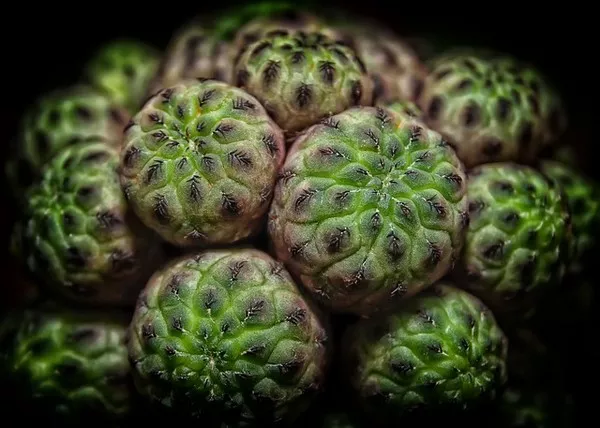Succulents, with their captivating diversity and distinctive charm, have captured the hearts of plant enthusiasts and gardeners around the world. These resilient plants are celebrated for their ability to thrive in arid conditions and their unique, fleshy appearance. While their striking shapes and colors make them stand out, one crucial element that often determines their success is the type of soil they call home. In this comprehensive guide, we delve into the essential components of succulent soil, shedding light on the optimal conditions required for these captivating plants to flourish.
Understanding the Needs of Succulents
Succulents, encompassing a vast array of plant species, originate from regions characterized by limited water availability. Their ability to store water in their leaves, stems, or roots is what sets them apart from other plant varieties. To cater to their natural adaptability, cultivating succulents in the right type of soil is paramount.
The Ideal Soil Composition
Creating a well-draining, nutrient-rich soil is fundamental for the health and vitality of succulents. The key is to strike a balance that provides adequate moisture retention without risking waterlogging, which can lead to root rot.
1. Aeration and Drainage
Succulents loathe standing water, making proper drainage a non-negotiable requirement. The soil mixture should facilitate water movement to prevent roots from becoming waterlogged. Components like perlite, coarse sand, or pumice can be incorporated to enhance drainage. These lightweight materials create air pockets within the soil, ensuring that excess water can escape freely.
2. Organic Matter
While succulents thrive in well-draining soil, they also benefit from some organic matter. Adding compost or well-rotted organic materials contributes to the soil’s texture and provides essential nutrients over time. Strike a balance, as excessive organic matter may compromise drainage.
3. Mineral Content
A mineral-rich soil mixture provides essential nutrients to support succulent growth. A balanced blend of minerals and nutrients, often found in commercial cactus or succulent soil mixes, can be an excellent option. Alternatively, gardeners can create a custom blend by mixing potting soil with sand, perlite, and a mineral supplement.
4. pH Level
Succulents generally prefer slightly acidic to neutral soil conditions, with a pH range between 6.0 and 7.0. Maintaining an appropriate pH level ensures that essential nutrients are readily available to the plants.
5. Pre-Packaged vs. Homemade Mixes
Commercial succulent soil mixes are readily available and are specifically formulated to meet the needs of succulents. These pre-packaged mixes often strike the right balance between aeration, drainage, and nutrient content. However, many experienced gardeners choose to create their own soil mixes, tailoring them to suit the specific needs of their succulent collection.
Best Practices for Potting Succulents
Planting succulents in containers presents an opportunity to create an optimal environment for these captivating plants.
1. Choosing the Right Container
Select a container with drainage holes to prevent water accumulation at the bottom. Terracotta pots, known for their porous nature, are excellent choices as they promote air circulation and help wick away excess moisture.
2. Layering and Depth
Begin with a layer of well-draining material, such as gravel or broken pottery, at the bottom of the container. This aids in further enhancing drainage. When potting succulents, ensure that the depth of the container is sufficient for the plant’s roots and allows room for growth.
3. Correct Planting Technique
Gently remove the succulent from its nursery pot, being cautious not to damage the roots. Place the plant in the center of the container, ensuring that it sits at the same level it was in its original pot. Fill the remaining space with the prepared soil mix, gently patting it down.
4. Finishing Touches
Top the soil surface with a layer of decorative gravel or pebbles. This not only adds an aesthetic touch but also helps prevent moisture loss through evaporation.
Caring for Succulents
Once planted, succulents require consistent care to thrive and flourish.
1. Watering
Succulents are low-maintenance plants when it comes to watering. Allow the soil to dry out completely between waterings. Insert a finger into the soil to assess its moisture level; if it feels dry up to the first knuckle, it’s time to water. During active growth periods, typically spring and summer, succulents may require more frequent watering.
2. Sunlight
Succulents are renowned sun-lovers, thriving in bright light conditions. Place them in a location that receives at least six hours of indirect sunlight per day. Avoid exposing them to intense, direct sunlight, especially during the hottest part of the day, as this can scorch their leaves.
3. Temperature and Humidity
Succulents are well-suited to a variety of temperature conditions, but they generally prefer warmth. Protect them from extreme cold temperatures, especially if frost is a concern. Most succulents are adapted to low humidity environments, making them suitable for indoor cultivation.
Conclusion
Choosing the right soil for succulents is an essential step toward fostering their health and vitality. A well-draining mixture rich in minerals and nutrients provides the ideal foundation for these captivating plants to thrive. By understanding the unique requirements of succulents and implementing best practices for potting and care, gardeners can unlock the full potential of these resilient and visually stunning additions to their botanical collection.


